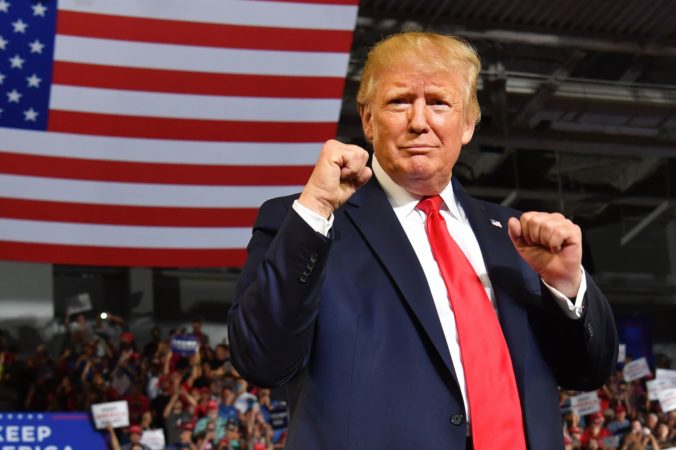Donald Trump has dominated news coverage in the U.S. for over 9 years. But in all that time, liberals and even leftists still haven’t learned much about how he operates. His politics remain a mystery to them, sparking widespread and ineffective reaction.
I made my first attempt at mapping Trump’s rhetoric way back in 2018. In that post, I said a few words about how Trump selects his topic and audience.
I’ll build on that post in this one. But this time our topic is how Trump uses hyperbole, unclear language, and provocative behavior to generate overreaction from his Democratic opponents.
Trump and the Great Democracy Debate
Democrats built their theory of the 2024 election around a great battle between ‘democracy’ and ‘fascism.’ Leftists obviously differ from Democrats in some of the details, but most also present Trump as a fascist. I’ve argued that the frame doesn’t work. And voters largely agree. Trump led the race by several points with Biden as his opponent, and he’s still running a point or two ahead against Kamala Harris.
Voters aren’t buying the frame.
But Democrats continue running all of Trump’s remarks through the same lens. Most recently, they latched onto a video of Trump speaking in front of an audience of evangelical Christians.
Here’s what Trump said:
“Christians, get out and vote, just this time. You won’t have to do it anymore. Four more years, you know what, it will be fixed, it will be fine. You won’t have to vote anymore, my beautiful Christians… In four years, you don’t have to vote again.”
The Democrats read this and shouted that Trump was promising to cancel future elections and rule as a permanent dictator.
What Trump Really Said
Is that what Trump said, though? Well, no.
Trump’s remarks fit into his standard pattern of hyperbole and provocative language. In a narrow sense, he’s claiming that his second term will be so over the top great that he’ll solve all of the U.S.’s problems between now and 2029. Hence, his supporters “won’t have to vote anymore.”
This, of course, is relatively clear from the context. It’s not hard to figure out that this is what Trump is saying. It takes quite a lot of theoretical baggage and apparatus to fit his remarks into the Democratic frame.
But, of course, Trump knows all this. With remarks like these, he’s deliberately provoking Democratic overreaction. He wants Democrats to call him a fascist.
Trump’s Theory of Victory
And here’s where we arrive at what Trump is really doing when he says things like this. Trump wants Democrats to overreact to him. He wants them to make heated, hyperbolic claims of their own.
Why?
Because when Democrats call Trump a fascist or say he’s going to ‘destroy democracy,’ Trump uses this as material to fire up his base and drive turnout. He presents himself as a misunderstood, persecuted target of Democratic outrage. And this all allows the things he actually does – the cronyism, the self-dealing, the far right-wing judges he’s appointed, and so on – to pass largely unnoticed and without critical commentary.
Trump’s theory of victory is that he can grab a larger share of the vote by having the voters watch the Democrats overplay their hand. And, for the most part, Democrats do exactly what he wants them to do.
Will It Work?
Finally, there’s the question of whether it will work. And this is where I have to give Trump a mixed review, at best.
There are some examples of where it has worked for him quite well. Consider the first impeachment trial of 2019 and early 2020. Impeachment was warranted, but it was a bad strategy for Democrats. Trump successfully argued that Democrats overreached, and he increased his popularity coming out of it.
As a result of the first impeachment, Trump literally went from a surefire bet to lose the 2020 election to a possible winner of that election.
It was his bungling of the Covid response, more than anything, that cost him a win in 2020. And the Covid response counts an area where the Trump strategy failed.
Trump said any number of wild and provocative things about the pandemic. Democrats called him on it, but this time it worked for them. The public took the side of the Democrats over Trump. This is largely because it was pretty much impossible not to notice the pandemic. Trump wasn’t able to play it off that time.
And so, Trump’s strategy is something that we can read off from his actions. Leftists should take note of what Trump’s doing and factor it into how they analyze him. And some leftists seem able to do this.
Democrats, though, still haven’t put it together. They keep doing exactly what Trump wants them to do. The good news is that the Trump strategy is really only a partial success. Even with Democrats playing into his hand, Trump wins only some of the time.
